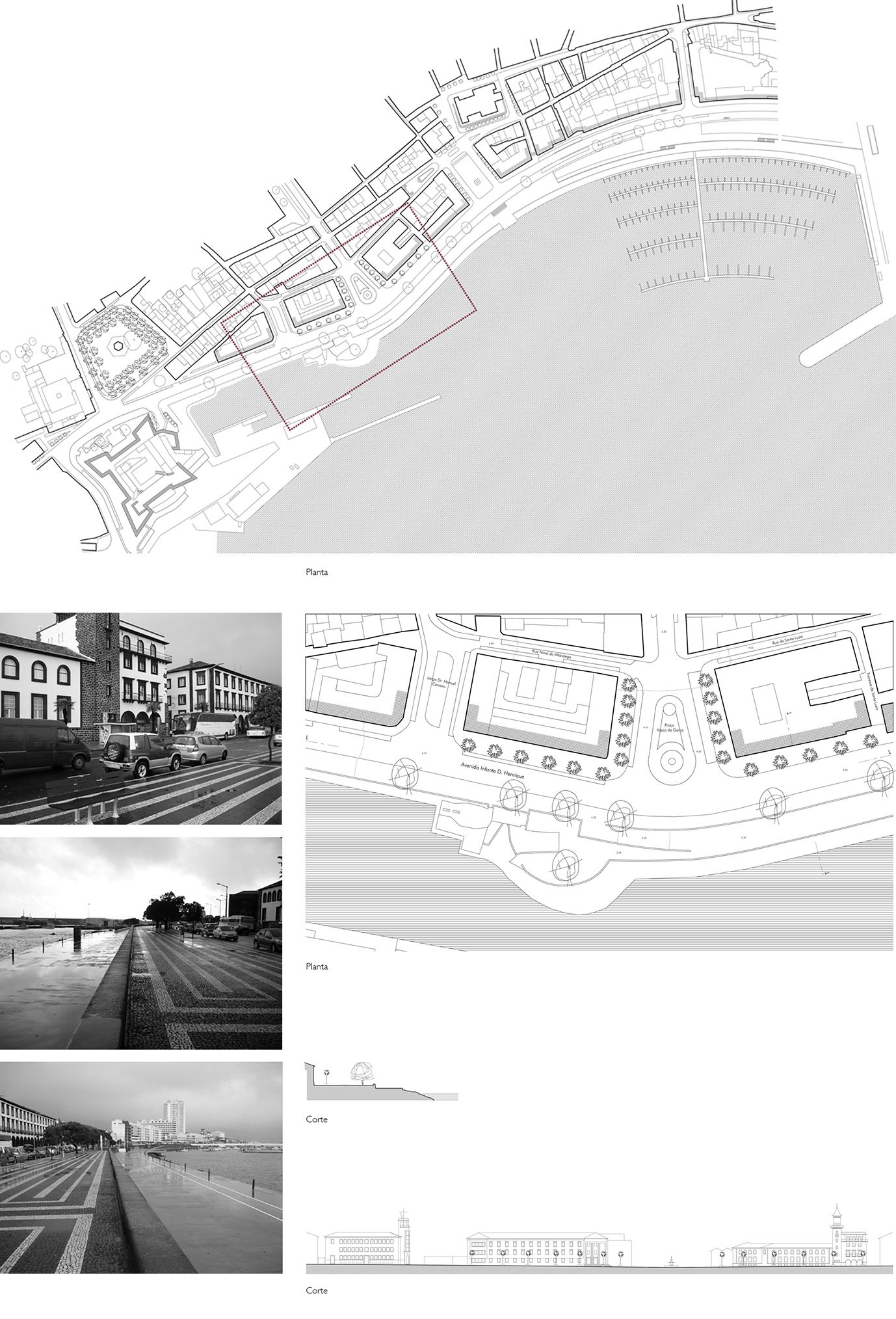PONTA DELGADA / Av. Infante D. Henrique
The Infante D. Henrique avenue, commonly known as "Avenue" is the Ponta Delgada marginal street, linking the city with its sea front in the area protected by the harbor wall and the area of Calheta in the east.
Result of two separate projects and work campaigns, the first in the late 1940s and the second in 1980, the avenue is divided into two very distinct sections. The architect João Aguiar travels to Ponta Delgada in 1942 with the purpose of carrying out the study of a "coastal avenue" which he them integrates in the work of the Urban Development General Plan that the City Council asks him to produce. Thus, the oldest part of the avenue is developed between the San Francisco field and the São Brás Fort in the west end and the Church of St. Peter. It has a profile 27 meters and constant hight, which according to the author would give the city of Ponta Delgada in an image of modernity, while recovering through the design and details of spaces and buildings a sense of continuity of traditional architecture. Centered on Gonçalo Velho Cabral square, this first section allowed the construction of large public facilities, such as the Post Office, Customs and the Captaincy, the construction of representation spaces such as the square and the monument to the first captain of S. Miguel Island. The implementation of this new urban front meant the filling of the old port and its relation to the urban fabric of the city had with the coast, but the operation was controversial by the architectural model used, since at the time rejected by the architects of a younger generation of architects influenced by modernist ideas expressed in 1948 congress. As a result the traditional aesthetic codes were no longer used in buildings raised to the east of the square, which still maintains the marginal urban front profile with the exception of building the tower Sol Mar built at the end of the 70s, which broke the hierarchy of previous scales.
The latest section was designed starting from different principles. The east avenue presents a more sinuous profile a height fluctuation, and is less defined by urban fronts, features are more focused on the car circulation. Here the new pool was located, the Naval Club, the recreational marina and hotel district.
One of the most frequented walking and leisure areas of the city with the extensive walkways and terraces, the importance of the Infante D. Henrique avenue in the structure and image of the city of Ponta Delgada justified a series of recent interventions of which the operation in the Portas do Mar is an example, held in order to allow the use and enjoyment of the nearest water infrastructure, albeit with some loss of clarity of the design of the old wall resulting from the João Aguiar project.
